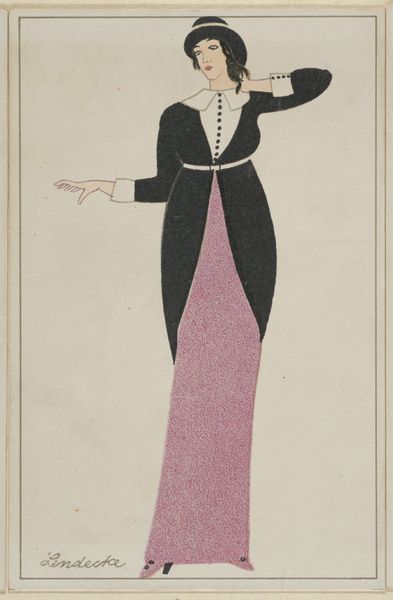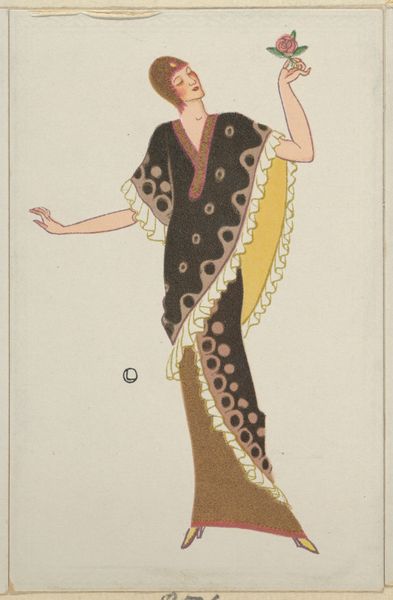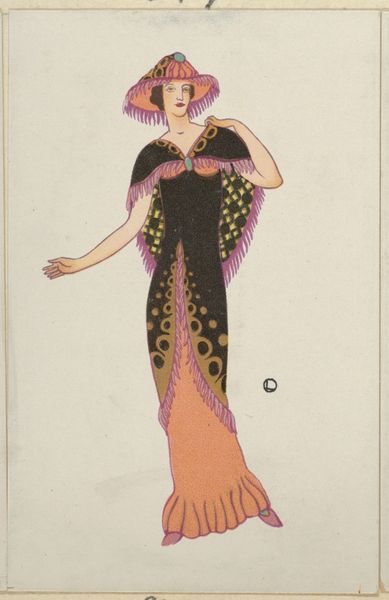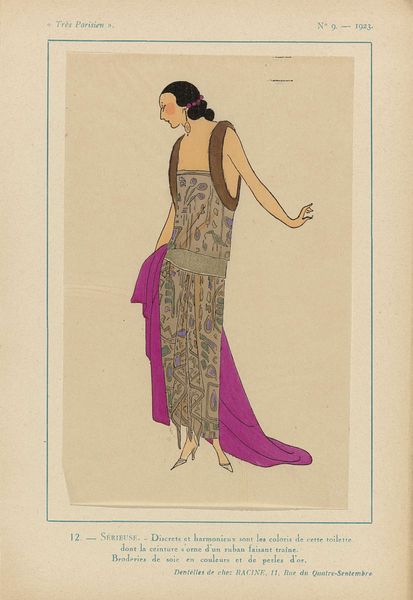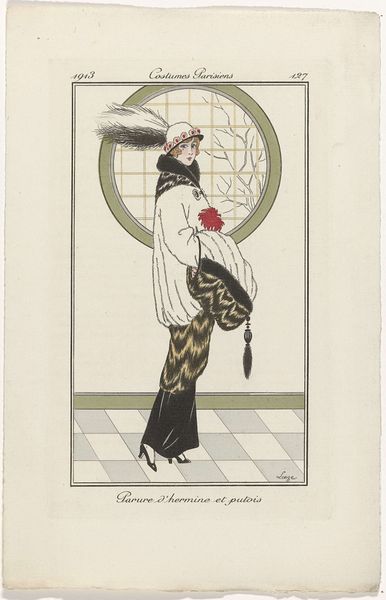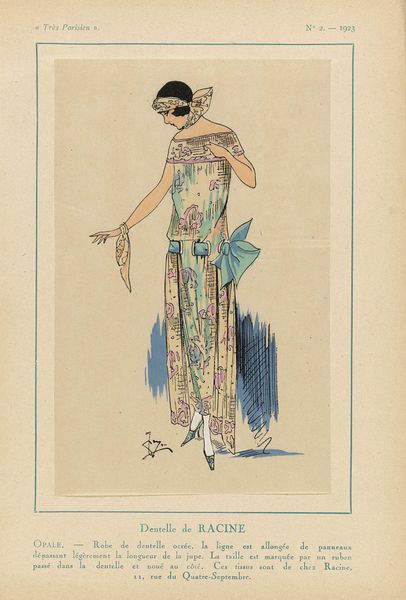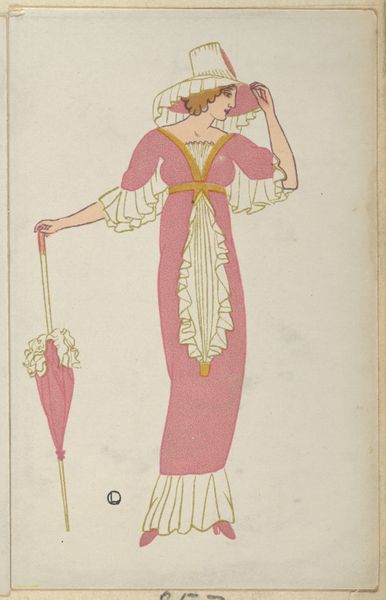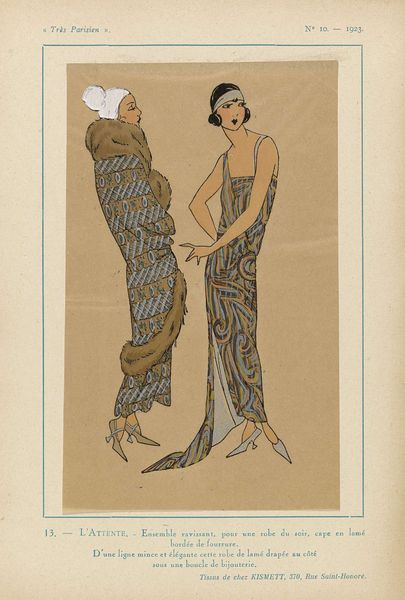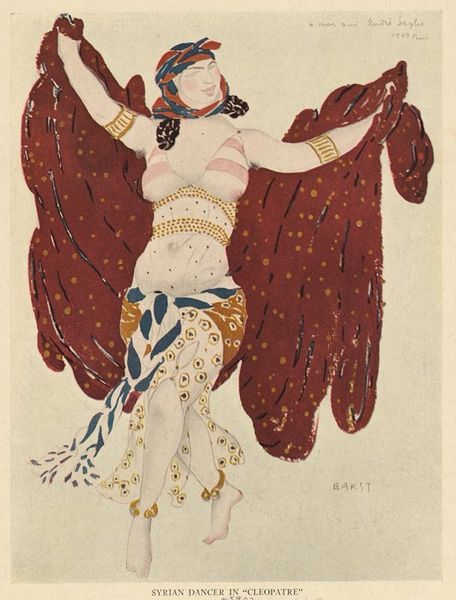
drawing, print
#
portrait
#
drawing
#
art-nouveau
# print
#
caricature
#
caricature
#
figuration
#
watercolour illustration
#
decorative-art
Dimensions: Sheet: 5 1/2 × 3 9/16 in. (14 × 9 cm)
Copyright: Public Domain
Editor: Here we have Otto Lendecke's "Fashion (Mode)," created in 1912. It’s a print, a drawing, with an illustration feel. What strikes me immediately is the elongated, almost caricatured figure – it feels like a stylish commentary on the trends of the time. How would you interpret this work? Curator: From a formalist perspective, the image presents a fascinating interplay of line, shape and color. Note the dominance of the curvilinear, particularly in the sweeping lines of the figure's gown and the concentric patterns. Lendecke is playing with Art Nouveau aesthetics, abstracting the human form into decorative shapes. Editor: So, the emphasis is less on representing reality and more on creating a visually striking composition? Curator: Precisely. Consider the limited color palette - muted browns and blacks offset by hints of yellow - and the way these colors are distributed. What kind of effect do you think the specific use of this palette has? Editor: It’s very muted and contained, so the starkness makes you focus on the dress’s contours, almost like you’re looking at its geometric shapes, which almost overpowers the figure. Curator: Good, exactly. The relationship between the figure and her gown becomes almost symbiotic. This isn’t simply a portrait; it's an exploration of form and its relationship to surface design. The tension lies in how recognizable objects can blur the visual perception. Editor: It’s fascinating how focusing on the visual elements reveals so much about the artist's intent and style. It moves the artwork away from being purely an object and instead focuses on an entirely separate relationship. Curator: Indeed; decoding an image through visual analysis and how it interacts with the eye brings it into a completely different reality.
Comments
No comments
Be the first to comment and join the conversation on the ultimate creative platform.
